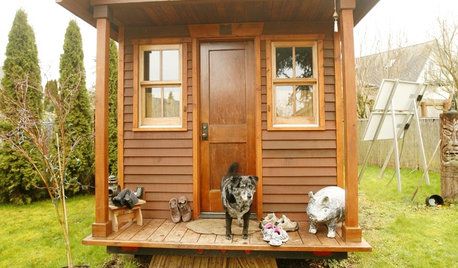In-ground Misty Blueberries: need help from experienced folks..
homey_bird
13 years ago
Related Stories

MOST POPULAR9 Real Ways You Can Help After a House Fire
Suggestions from someone who lost her home to fire — and experienced the staggering generosity of community
Full Story
EDIBLE GARDENSSummer Crop: How to Grow Blueberries
Plant blueberries in spring or fall for garden beauty through three seasons — and a sweet superfood in summer
Full Story
GARDENING GUIDESGreat Design Plant: Grow Blueberries for Their Fruit and More
Eastern gardeners should consider growing blueberry plants for their delicious fruits, bee-friendly spring blooms and brilliant fall foliage
Full Story
DECORATING GUIDESDecorate With Intention: Helping Your TV Blend In
Somewhere between hiding the tube in a cabinet and letting it rule the room are these 11 creative solutions
Full Story
LIFE12 House-Hunting Tips to Help You Make the Right Choice
Stay organized and focused on your quest for a new home, to make the search easier and avoid surprises later
Full Story
COLORPick-a-Paint Help: How to Quit Procrastinating on Color Choice
If you're up to your ears in paint chips but no further to pinning down a hue, our new 3-part series is for you
Full Story
SELLING YOUR HOUSE5 Savvy Fixes to Help Your Home Sell
Get the maximum return on your spruce-up dollars by putting your money in the areas buyers care most about
Full Story
ORGANIZINGGet the Organizing Help You Need (Finally!)
Imagine having your closet whipped into shape by someone else. That’s the power of working with a pro
Full Story
MOVINGMaking a Home Away From Home
Feeling like a stranger in a strange land? These tips can help ease the transition after a big move
Full Story
SMALL SPACESLife Lessons From 10 Years of Living in 84 Square Feet
Dee Williams was looking for a richer life. She found it by moving into a very tiny house
Full StoryMore Discussions








hoosierquilt USDA 10A Sunset 23 Vista CA
applenut_gw
Related Professionals
Wixom Landscape Architects & Landscape Designers · Alamo Landscape Contractors · Arden-Arcade Landscape Contractors · Burlington Landscape Contractors · Mercedes Landscape Contractors · Paterson Landscape Contractors · Plantation Landscape Contractors · Rockwall Landscape Contractors · Grand Rapids Swimming Pool Builders · Sudley Swimming Pool Builders · Richmond Window Contractors · Seattle Window Contractors · Fairland Window Contractors · Lindenhurst Window Contractors · White Center Window Contractorshomey_birdOriginal Author
kittymoonbeam
homey_birdOriginal Author